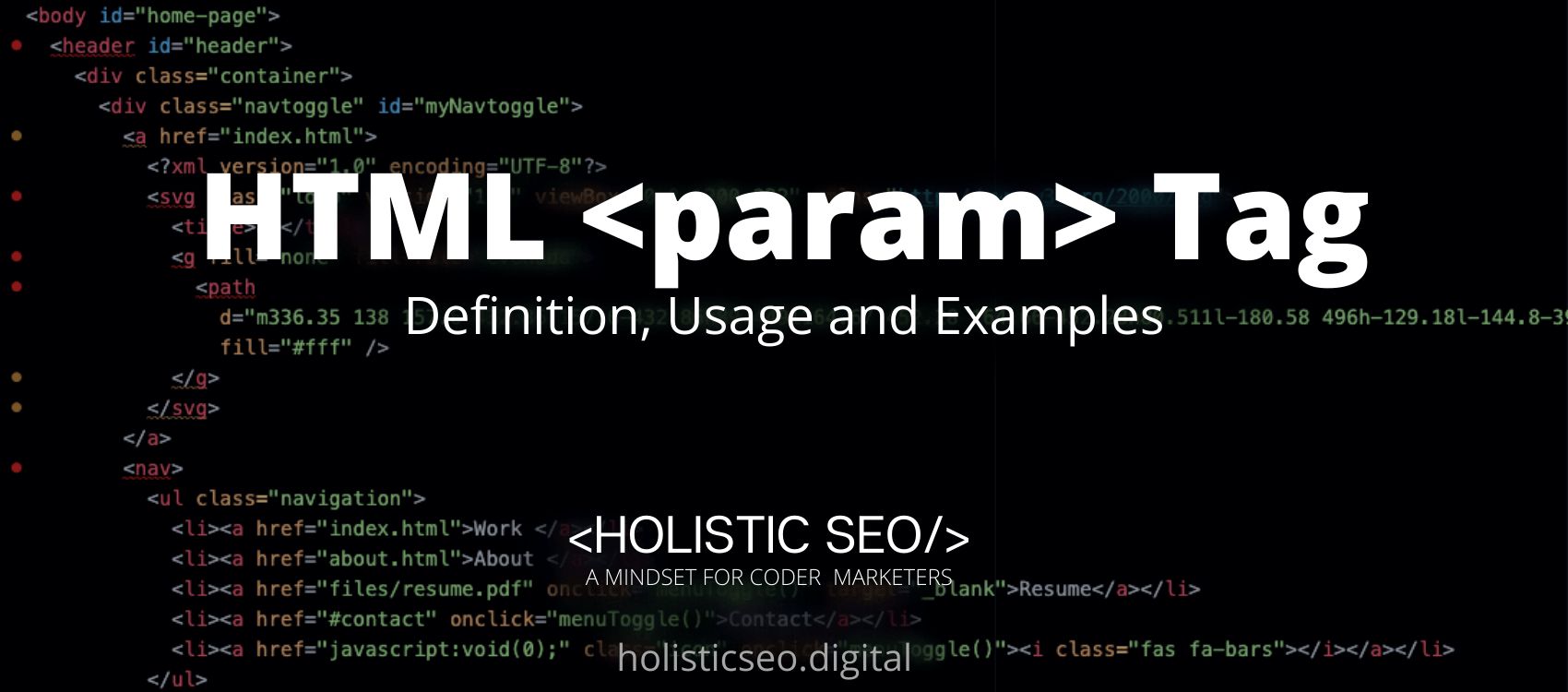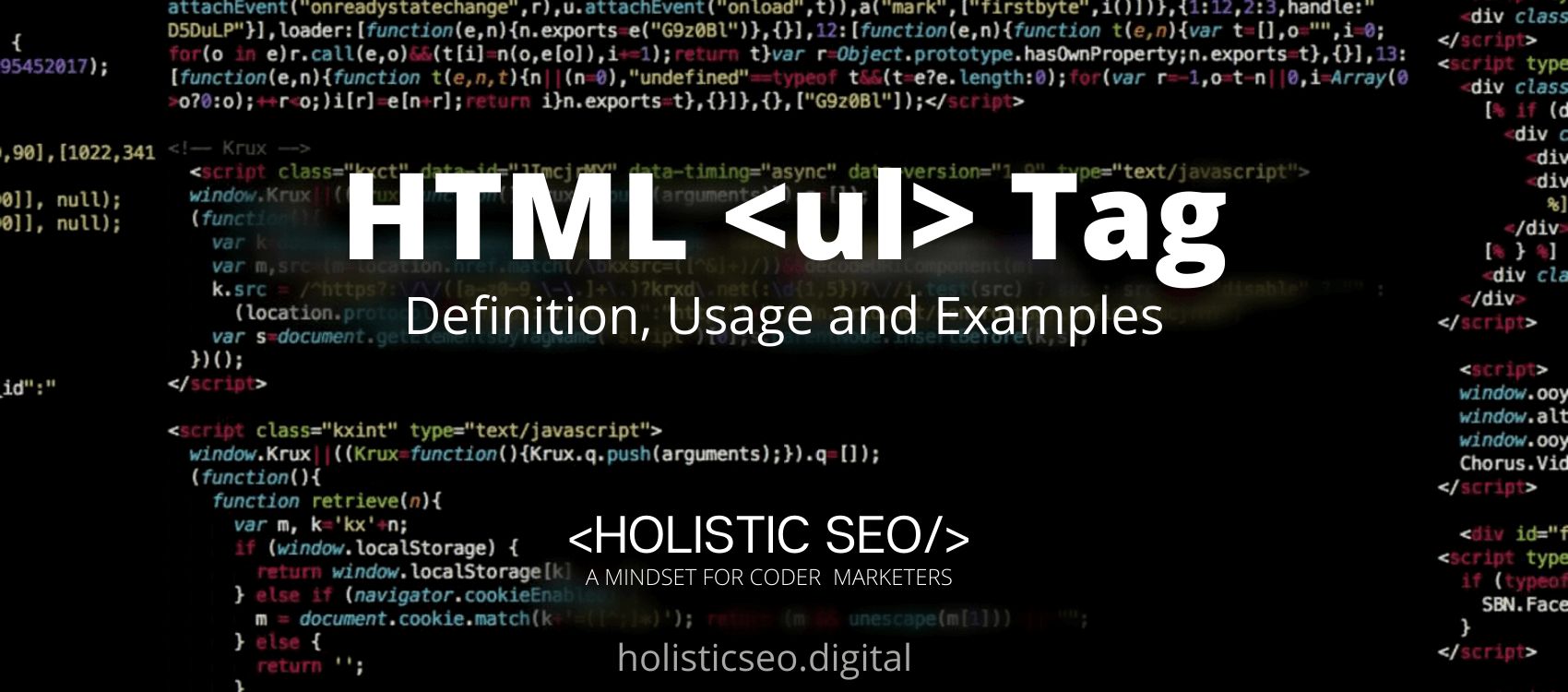The <param> HTML Tag is used to send parameters to an embedded object. The <param> HTML Tag represents nothing on its own. It is used in conjunction with the <object> HTML tag to give parameters. The <param> HTML Tag is part of Programming HTML category in HTML Element Reference. The attributes of the <param> HTML Tag are name, value, global attributes and events attributes.
<param> code block example to learn how it works is given below.
<object data="/music/lostmojo.wav">
<param name="controller" value="true">
<param name="autoplay" value="false">
</objectThe second example usage of the “<param>” code block example is given below.
<object data="/music/lostmojo.wav">
<param name="controller" value="true">
<param name="repeat" value="false">
</object>What is <param> HTML Tag?
The <param> HTML Tag is used to provide parameters for an <object> HTML Tag. The <param>HTML Tag does not indicate anything on its own.
How to Use <param> HTML Tag?
To use the <param> HTML Tag, the <param name=”” value=””> tag should be created by the web developer, The name and value attributes offer a name/value pair for usage by the <object> HTML Tag. Before any “flow content,” the <param> HTML Tag must be nested inside an <object> HTML Tag.
Example Usage of <param> HTML Tag?
The following example of usage of <param> HTML tag is given below.
Set the "repeat" parameter to "true" to have the sound play as soon as the page loads.
<object data="taylorswift.wav">
<param name=replay" value="true">
</object>What are the Attributes of <param> HTML Tag?
There are multiple attributes for the <param> HTML Tag. The following attributes are listed below.
- Global Attributes: The <param> HTML Tag supports Global Attributes. All HTML elements, even those not specified in the standard, can have global attributes. This means that any non-standard elements must nevertheless allow certain characteristics, even if using such elements makes the content non-HTML5 compliant.
- Event Attributes: The <param> HTML Tag supports Event Attributes. The Event Attributes always have a name that begins with “on” and is followed by the name of the event for which it is intended. They specify a script to run when an event of the defined type is dispatched to the element with the specified attributes.
- Name Attribute: The <param> HTML Tag supports Name Attribute. The attribute of name Provides a name for the item. The name attribute provides a name for the item.
- Value Attribute: The <param> HTML Tag supports Value Attribute. The Value Attribute defines the parameter’s value.
What are the Default CSS Settings for <param> HTML Tag?
The following is the Default CSS Setting for the <param> HTML Tag.
param {
display: none;
}What are the Related other HTML Tags to <param>?
The other related HTML Tags to the <param> HTML Tag are listed below.
- <noscript> HTML Tag: The <noscript> HTML Tag is related to <param> HTML Tag because they are both programming tags. The <noscript> HTML Tag specifies an alternative content for people who do not support client-side scripting.
- <applet> HTML Tag: The <applet> HTML Tag is related to <param> HTML Tag because they are both programming tags. HTML5 does not support the <applet> HTML Tag. Instead, use <embed> or <object>. This class defines an embedded applet.
- <embed> HTML Tag: The <embed> HTML Tag is related to <param> HTML Tag because they are both programming tags. The HTML <embed>Tag specifies a container for an external (non-HTML) program.
- <object> HTML Tag: The <object> HTML Tag is related to <param> HTML Tag because they are both programming tags. The HTML Tag <object> specifies an embedded object.
- 48 Online Shopping and Consumer Behavior Statistics, Facts and Trends - August 22, 2023
- B2B Marketing Statistics - August 22, 2023
- 38 Podcast Statistics, Facts, and Trends - August 22, 2023


